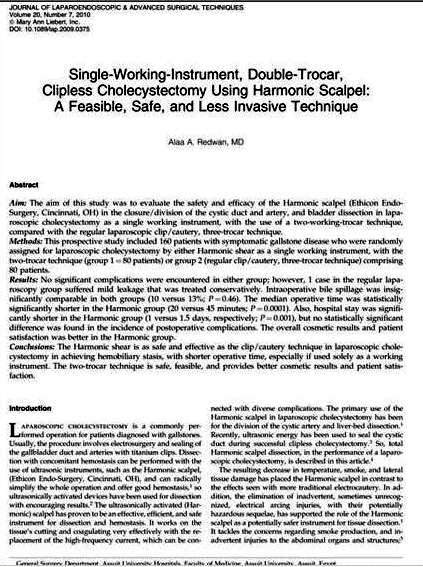Abstract
Aim: to evaluate safety and efficacy of harmonic scalpel in closure/division of the cystic duct and artery, and bladder dissection in laparoscopic cholecystectomy as a single working instrument, with the use of two working trocars technique, compared with regular laparoscopic clip/cautery, three trocars technique.
Method: A prospective study included 160 patients with symptomatic gall stone disease were randomly assigned for laparoscopic cholecystectomy by either harmonic shear as a single working instrument, with two trocars technique (group I = 80 patients), or group II (regular clip/cautery, 3 trocars technique) including 80 patients.
Results: No significant complications were encountered in either group; however 1 case of regular laparoscopy group suffers mild leakage treated conservatively. Intra-operative bile spillage was insignificantly comparable in both groups (10% vs. 13%; P=0.46). The median operative time was statistically significantly shorter in harmonic group (20 vs. 45 minutes; P=0.0001). Also hospital stay was significantly shorter in harmonic group (1 vs. 1.5 days respectively; P=0.001), but no statistically significant difference was found in the incidence of post operative complications. The overall cosmetic results and patient satisfaction was better in harmonic group.
Conclusion: Harmonic shear is as safe and effective as clip/cautery technique in laparoscopic cholecystectomy in achieving hemo-biliary stasis; with shorter operative time especially if used solely as a working instrument. Two trocars technique is safe, feasible, and provides better cosmetic results and patient satisfaction.


